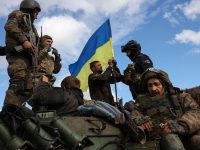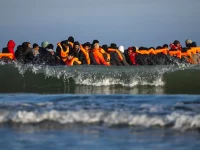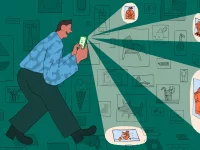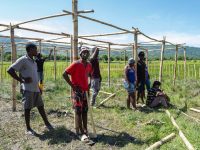Hiroshima, Nagasaki, and Fukushima

ELONA GAY 70 years after the end of World War 2, the monitoring of Japanese atomic bomb survivors, known as hibakusha, for radiation-related health problems continues. The atomic bombings of Hiroshima and Nagasaki in 1945 were the beginnings of a long and deep engagement by Japanese people and institutions with radiation health. Ironically, the two rebuilt cities, and especially their universities, became global centres of research and expertise on radiation health with medical communities that have a unique responsibility towards survivors. Indeed, one of the first and most influential Japanese chroniclers of hibakusha and their sufferings, Takashi Nagai, was a radiologist and himself a survivor who succumbed to radiation poisoning.
Experts from both cities, some of them descendants of A-bomb survivors, have also been involved since 1986 in monitoring health in the former USSR after the Chernobyl nuclear disaster.
Given this legacy, medical personnel from Hiroshima and Nagasaki were among the first to arrive at the Fukushima disaster site, and many have stayed on to buttress expertise at the Fukushima Medical University, which is now a leading centre for health care after nuclear accidents. Experience from Hiroshima and Nagasaki, as well as Chernobyl, has had a direct bearing on the Fukushima Health Management Survey, a long-term monitoring plan of the affected population modelled on the treatment of post-war hibakusha. There are now at least 350 000 individuals to be followed over their lifespans for effects of low-dose radiation.
The linkages between Hiroshima, Nagasaki, and Fukushima are thus more than just symbolic, having shaped current health management practices and the institutions that run them, as well as public responses to these events. The contexts of 1945 and 2011 are clearly very different, and intervening events have also shaped current discourse about Fukushima. The post-war introduction of nuclear energy to Japan was initially distant from medical discussion, given Cold War concerns with nuclear weaponry. During this time attitudes were also influenced by the Lucky Dragon incident of 1954—when Japanese fishermen aboard the Daigo Fukuryu Maru (Lucky Dragon) were affected by a US hydrogen bomb test at Bikini Atoll—from which Japanese antinuclear activism can be dated.
A series of large industrial pollution incidents in the 1950s and 1960s, along with the subsequent occurrence of small nuclear plant accidents, have also kept the spectre of radiation-related public health crises before the Japanese public.
More recently, there has been growing controversy about the overuse of medical radiation technologies in Japan.
The legacy of Hiroshima and Nagasaki has nonetheless been a lens through which these and subsequent events have been filtered.
For the Japanese medical community, a clear difference between the legacy of Hiroshima and Nagasaki and that of Fukushima has been the crisis of communication and trust with the general population. At the local and clinical level, doctors and nurses in Fukushima were dedicated and heroic first-responders, but had little training for a radiation-related disaster. At the national level, experienced radiation experts had difficulty communicating risk to people in the affected areas. This situation partly arose from the difficulty in translating research-related terminology about the health effects of radiation to an anxious population, and partly from public conflation of government-appointed doctors with politicians, the nuclear industry, and other parties that the public and media deemed responsible for the disaster. Public anxiety and anger, some of it directed against the medical community and individual physicians, was high in the aftermath of the Fukushima accident. Moreover, the response to Fukushima was also shaped by the effects of the disaster on the evacuees. The evacuated population is at increased risk for mental health problems and other social and psychological problems that accompany refugee status.
In addition, some of the Fukushima evacuees who live with the identity of radiation disaster survivors have been shunned because of supposed contamination and self-stigma is also a problem among some evacuees,
which echoes the experiences of some hibakusha from Hiroshima and Nagasaki.










